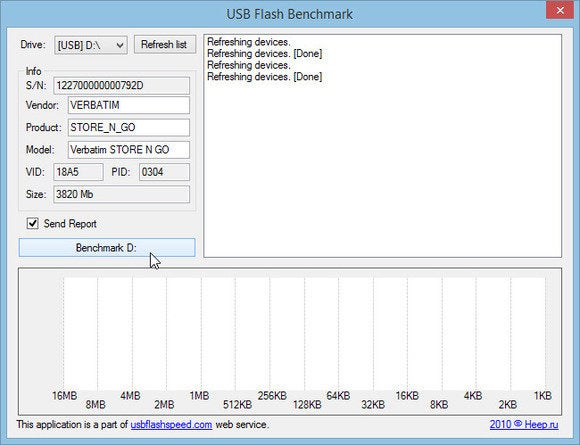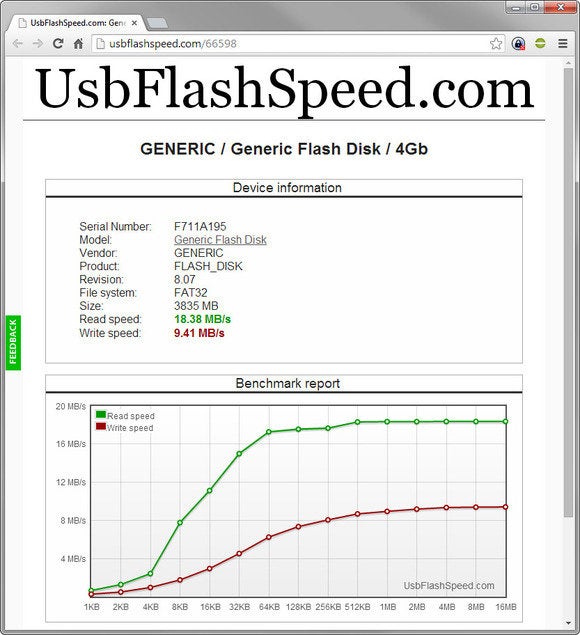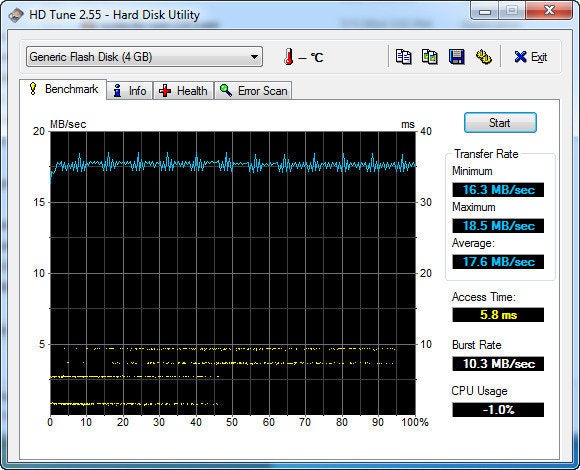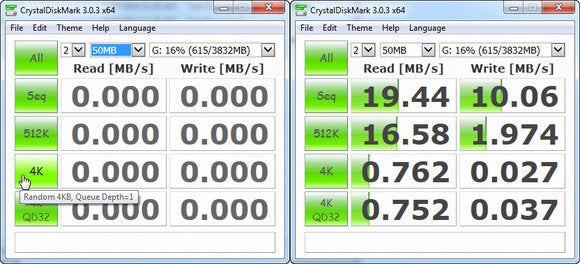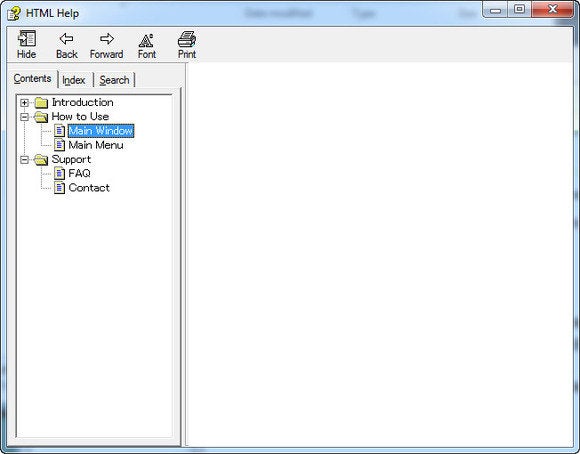
USB Flash Benchmark is not only free; it’s also portable—you don’t need to install it to use it. The user interface is busy, but not difficult. All you have to do is plug in the drive, select it, then click the relatively big Benchmark D: button (the drive letter may vary).
When the testing is done, the information on screen is a bit overwhelming and confusing. Fortunately, a pop-up window provides a URL which will take you to your online results, including well-displayed Read and Write speeds.
HD Tune is much more than a benchmark tool; it’s a full drive diagnostic utility that can test the health of your drive and scan for errors. It’s the free, less-powerful version of the $35 HD Tune Pro.
After you’ve installed and launched HD Tune, simply click the Benchmark tab, select your drive, click Start, and wait. HD Tune provides only one number, without differentiating between reading and writing. As a rule, HD Tune’s scores are a bit lower than USB Flash Benchmark’s Read scores.
CrystalDiskMark makes a good choice for true techno-geeks. Here, you can design your own tests. You can pick a file size, set how many times the test runs, and whether you want sequential copying, or use random blocks of three different sizes. If you’re wondering what all that means, this probably isn’t the tool for you.
You can download CrystalDiskMark in installable and portable versions. But be warned: The installable version comes with potentially unwanted programs. The portable version comes with a blank (yes, blank) help file.
One final reminder: Whichever program you use, remember to select the right drive before testing. I couldn’t figure out why one external hard drive was so astonishingly fast—until I realized that I was accidentally timing the internal SSD.

